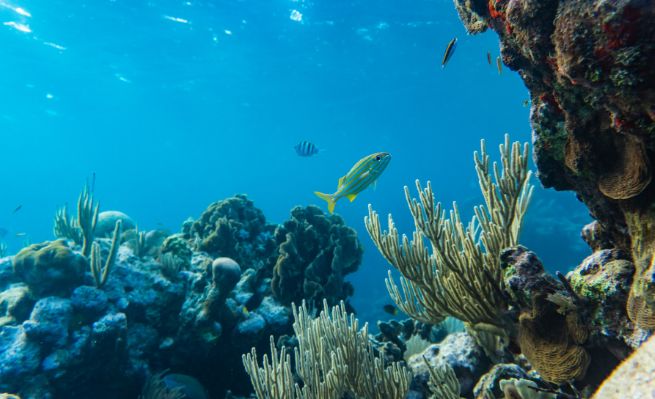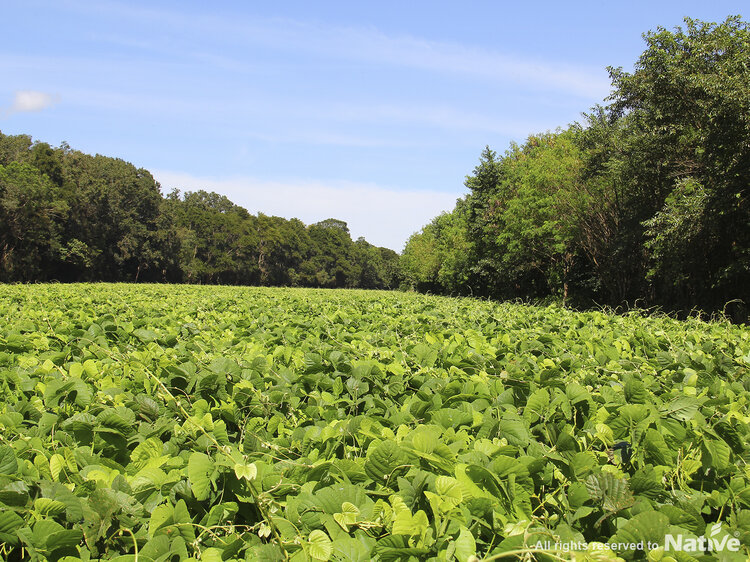Restore Our Planet: Yes, It Is Possible
Posted By on Apr 20th 2021
Restoring the Planet Is Possible—Here’s Proof | EcoEnclose
The theme of Earth Day 2021 - Restore Our Planet - may seem farfetched, especially if you’ve binge watched too many doomsday documentaries about the planet.
In fact there are so many current examples of ecosystems that have been healed, some of which are now operating in net neutral or positive ways. Reading about these is not just inspiring, it is a reminder that cynicism has no place in this movement.
A focus on solutions, action and optimism is the only path forward.
This blog post highlights five examples that remind us - Yes, We Can “Restore Our Planet” - and that anything less than this goal is simply no good enough.
First, a Word on Environmental Gratitude and Reciprocity
Robin Wall Kimmerer (Professor of Environmental Biology at the SUNY College of Environmental Science and Forestry) has written extensively and gorgeously about the notion of environmental reciprocity and gratitude.
Most people incorrectly see themselves as passive recipients or takers of what Mother Earth has to offer. Whether we like it or not, there is a reciprocal relationship between our actions and the planet. We over crop land, the land no longer provides for us. We dump excessive nutrients into the ocean, the oceans fight back with algal bloom.
Kimmerer encourages us to draw from indigenous mindsets and bring (first) deep gratitude to our interactions with nature, and then (second) reciprocity - give a gift in return.
The power in this mindset of reciprocity is incredible. Go on a hike with this mindset and you can’t help but pick up any litter you might find on the way. Garden and you can’t help but avoid chemicals that might strip your soil of biodiversity. With this lens, “Restore Our Planet” is something all of us can, and must, do right away. These broader examples of “Restoring Our Planet” are, in many ways, simply a broad and more systematized application of this mindset.
Restore Our Planet Example 1: Marine Protected Areas

Marine Protected Areas (MPAs) are established by governments to protect marine ecosystems from harmful human activities. Some MPAs have fairly minimal restrictions, such as setting fishing limits or restricting scuba diving.
Other MPAs prohibit any activity in a given area. Today, over 40% of US marine waters belong to some sort of MPA. MPAs aren’t always success stories, and often the restrictions within an MPA aren’t tight enough or aren’t actually enforced.
But there are incredible stories of MPAs doing exactly what they aimed to achieve.
One such example is in American Samoa. Coral reefs in the American Samoa have been under attack, due to climate change, pollution and fishing. In 1978 almost 90% of the coral on one island, Tutuila, was killed by a crown-of-thorns starfish outbreak.
In response, islanders established a marine sanctuary, banning the dumping of pollutants and heavily restricting fishing. They banned spearfishing, which was killing off the parrotfish (a species that feeds on harmful algae). They diverted waste pipes so nutrient rich wastewater would not be dumped into the ocean.
The coverage of living coral has been steadily increasing since these measures were put in place, with a recent jump from 25% to 36% (and continuing to climb).
Restore Our Planet Example 2: Green Cities
Much has been written about Curitiba, Brazil, once described as the most innovative city in the world. Unfortunately, the city’s sustainable development hasn’t necessarily been maintained as its political leadership changed in the last two decades.
But it is still my favorite example of green city planning.
In the 1970s, as other Brazilian cities embraced roads and automobiles, Curitiba took a different approach.
Mayor Jaime Lerner transformed an auto thoroughfare in the city into a pedestrian mall. He established a comprehensive and innovative Bus Rapid Transit (BRT) system (that was used by over 85% of residents!). He invested heavily in parks (now with more than 50 square meters of green space per person, compared to Buenos Aires’s two per person). The city’s main river, Iguacu, was protected from pollutants and from being channelized along concrete walls. The city's administration developed creative strategies to encourage waste management and recycling. The Green Exchange enabled residents to trade trash for tokens, which were good for produce and other items). Due to these incentives, Curitiba residents recycled an impressive 70% of their trash.
While Curitiba was not necessarily a utopic paradise, it certainly was a city with many advantages - cleaner air, cleaner water, open spaces, more conveniences (due to less traffic and easier public transportation), and access to healthier foods.
There are other beautiful stories of Green Cities - Vienna and Copenhagen often regaled as the top two.
But I particularly love this story of Curitiba because the city’s progress was driven not by an influx of money or a federal mandate - but by the grassroots leadership and commitment of a fairly small set of city officials and residents.
Restore Our Planet Example 3: Regenerative Agriculture

Another story from Brazil! The Balbo Group is the nation’s largest organic sugar grower.
Leontino Balbo Junior joined his family’s company in the late 1980’s and struggled personally with many of the conventional farming and crop extraction methods he saw. He therefore made a commitment to converting his family' operation to regenerative farming and extraction, with the aim of rebuilding the natural capital of his lands, rather than depleting it.
Implementing restorative practices and making them work for his family’s business often took a long time (with each season bringing about more learning and understanding of nature’s response to a tactic), and changes were not typically economically successful at first.
One of many examples he shares: “We eliminated fertilizers and chemical pesticides, adopting organic fertilizers and ground rocks, trying to attract beneficial living organisms to the soil. But we did not know which soil organisms needed a "friendly" environment below the ground. The soil "pets" lacked oxygen! Upon realizing this, we started to equip vehicles and equipment with high flotation wheels that guaranteed the integrity of the porous soil spaces! Thus, after creating better conditions for the additional action of homeostatic forces of nature to management practices, the results began to appear quickly and progressively.”
An example of how a seemingly focused regenerative practice actually has far reaching positive consequences: The company stopped burning waste from harvest and instead developed machinery that would drop this waste on fields (leaving around 14 tons of plant material in the field each year). Over time, this biomass waste led to rich soil dense with decomposing agents. This achieved the immediate goal of healthier and more fertile soils (and in turn, better sugarcane yields). But they also found that this practice created the foundation for an insanely robust food chain. “In other words, this plant material, and the natural fertilizers (organic and ground rocks) that we add to it will serve as food for the base of the food web, starting by the decomposers. Which, in turn, generates food / nutrition for animals and vegetables throughout the different trophic levels of life, even felines, birds of prey etc. The presence of biocidal chemicals simply does not allow this process to happen.”
External parties have studied The Balbo Group’s regenerative agriculture work extensively, and much has been written about its dramatic success - fertile soils, healthier crops, cleaner water. Of particular note - the sugarcane fields have become havens of biodiversity and are now home to over 200 species of birds, 500 species of arthropods and four species of large cats.
Restore Our Planet Example 4: Renewable Energy

Even in the US, with our relentless political feuding between renewable energy advocates and fossil fuel advocates, renewables have emerged as the long-term future of our energy landscape.
In fact, we reached a beautiful tipping point: renewable energy surpassed coal in April 2019 as a source for generating U.S. electric power.
Renewable energy was expected to represent 97% of net new-generation capacity additions in 2020.
It is getting much cheaper. The cost of installing wind power has declined by 50% since 2010, while solar costs have fallen by 85%. Renewable energy is now cheaper than fossil fuels.
New technology innovations also hold tremendous promise. Bill Gates-backed startup Heliogen has pioneered a way to generate temperatures exceeding 1,000 degrees Celsius through solar panels. This innovation means solar energy can actually become a viable alternative in heavy high heat manufacturing industries.
As of December 2020, 21 of the 30 largest U.S. utilities companies had set decarbonization goals (or net-zero equivalent targets). This means a whopping 70% of large utilities are banking on wind and solar, suggesting that - regardless of any short term impact of changing legislation, tax credits, or tariffs - renewable energy is not only here to stay, it is the future of our energy landscape.
A future in which all of our energy is derived from clean, renewable sources finally seems within reach.
Restore Our Planet Example 5: Materials Circularity

The concept of recycling has been around for a very long time and societies have naturally recognized that “waste” is actually full of inherent value and could be used as scraps or inputs in new things. In fact, the first written account of paper repulping is in Japan as early as 1031.
But, in the 1950s, the developed world began embracing single use as the way of the future. On August 1, 1951, Life Magazine published a two page article on “Throwaway Living” in which readers are sold on the notion that convenience and ease (i.e. single use) are essential to a modern lifestyle. This quickly led to a lot of trash. Parks, forests and highways became littered with garbage. And poorly planned landfilled became toxic graveyards and woefully overfilled.
These trends led to the current world of recycling and circularity we know today. In 1972, the first recycling mill was built in Conshohocken, Pennsylvania. In 1974, the first curbside recycling program as offered (in Missouri).
Back then, about 6% of our waste was recycled. Today, about 35% of our waste is recycled.
Recycled content rates are also on the rise. On average, glass in the US contains 23% recycled content. Aluminum cans contain 72% recycled content. Shipping boxes contain 35% recycled content.
These numbers are nowhere close to where we want them to be. But their trend is incredibly positive and promising.
And, we are entering an era of consumers and citizens being more conscious of waste than ever before, and newly cognizant of the role of “buying recycled.” With these winds at our sails, there is tremendous potential to grow from a 35% recycling rate to 50% or more within the next five years - setting the stage for a truly circular economy long-term.

